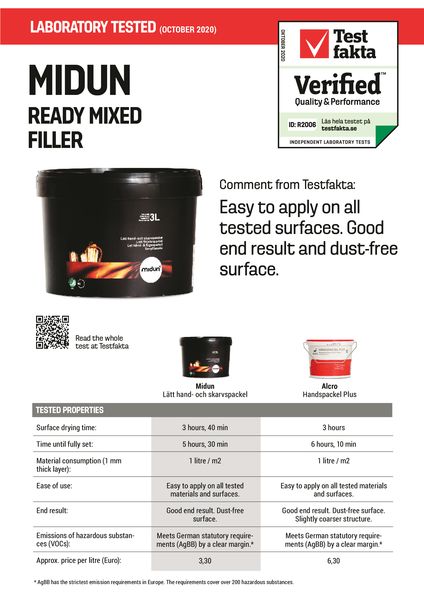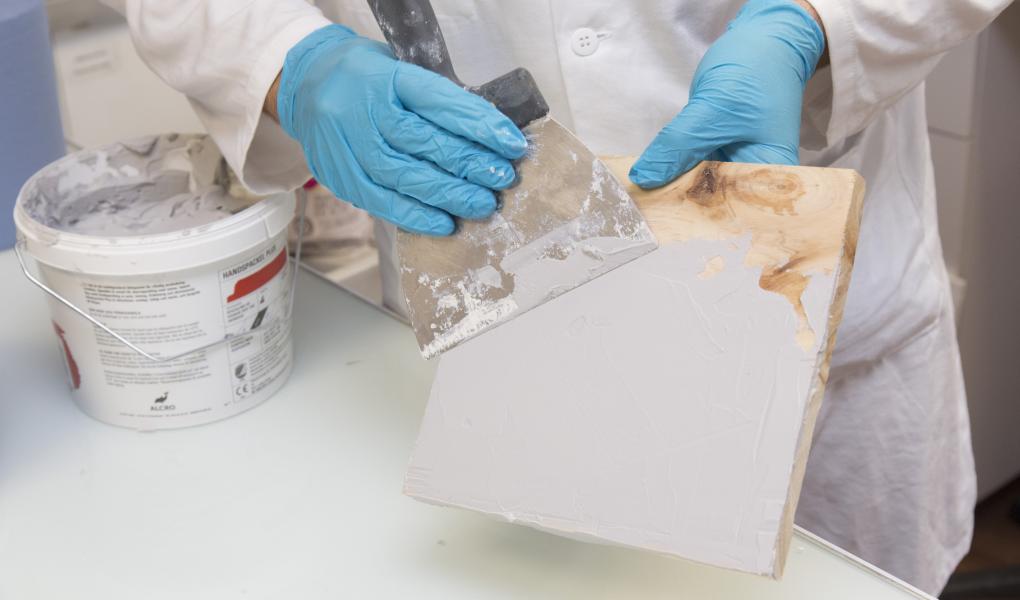Testfakta’s quality standard has tough criteria. The filler undergoes a standardised testing regime that covers drying time, consumption, application on different substrates, end result and emissions of volatile organic compounds. To meet the criteria for Testfakta’s quality standard, the filler must perform consistently well in every part of the test, match the information stated on the product and meet the threshold value for emissions of volatile organic compounds. Carrying the Verified Quality & Performance mark guarantees that the product offers thoroughly good quality. To obtain an idea about Midun's ready mixed filler (Midun Lätt Hand- och Skarvspackel) relative quality and performance, the product has been tested against and compared with one of the larger brand products in the Swedish market, Alcro Handspackel Plus (Alcro ready mixed filler). The results of the laboratory test show that the products are equivalent. The laboratory test was conducted by Eurofins ATS in France and Eurofins Product Testing in Denmark, with the Danish lab carrying out the emissions testing and the French lab focusing on quality and performance.  The test involved the following elements:
The test involved the following elements:
Drying time, surface
A 1 mm thick layer of filler is applied to a glass pane. Every 10 minutes, glass microbeads (approx. 0.5 mm in diameter) are released onto the surface, and then the beads are removed with a brush. Once the glass beads are easy to brush off and do not leave any marks on the surface, the test ends and the total time is reported as the surface drying time.
Drying time, fully set
A 1 mm thick layer of filler is applied to a glass pane. Every 10 minutes, a 1 kg weight is placed on the surface. The weight is then rotated a quarter turn. If the surface is not deformed, the test ends and the total time is reported as the drying time until fully set.
Material consumption
A 1 mm layer of filler is applied to a panel measuring 50 x 50 cm. The panel is weighed before and after the application. The difference in weight before and after filling gives the material consumption per square metre of filled surface.
Ease of use and end result
Filler is applied to various materials (plasterboard, pine, OSB, brick and concrete) to assess how easy the filler is to work with and how it bonds to different substrates. Any and all problems during application are reported. After drying, an assessment of the various filled substrates is carried out.
Emissions analysis
The laboratory has analysed the amount of volatile organic compounds (VOCs) that the filler releases into the indoor air. Volatile organic compounds are chemicals that may cause allergic reactions, headaches and sickness. The measurement is taken after 3 days and 28 days. The results of the analysis are compared with Germany’s statutory requirements concerning emissions from building products (AgBB). The Swedish regulations do not govern the amount of VOCs building products are permitted to emit. Testfakta Research October 22, 2020

